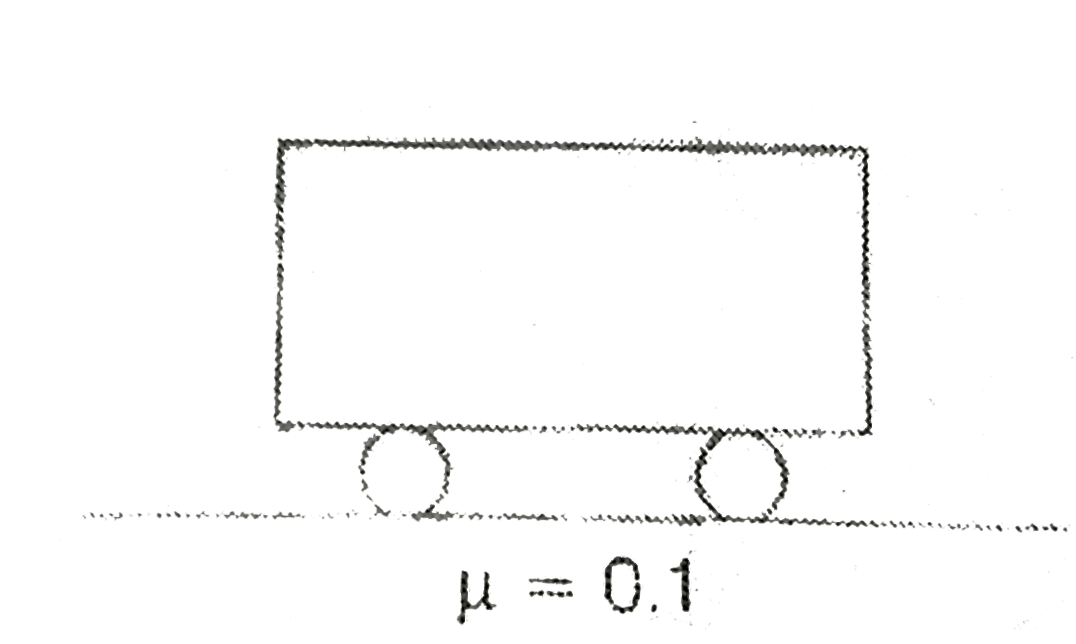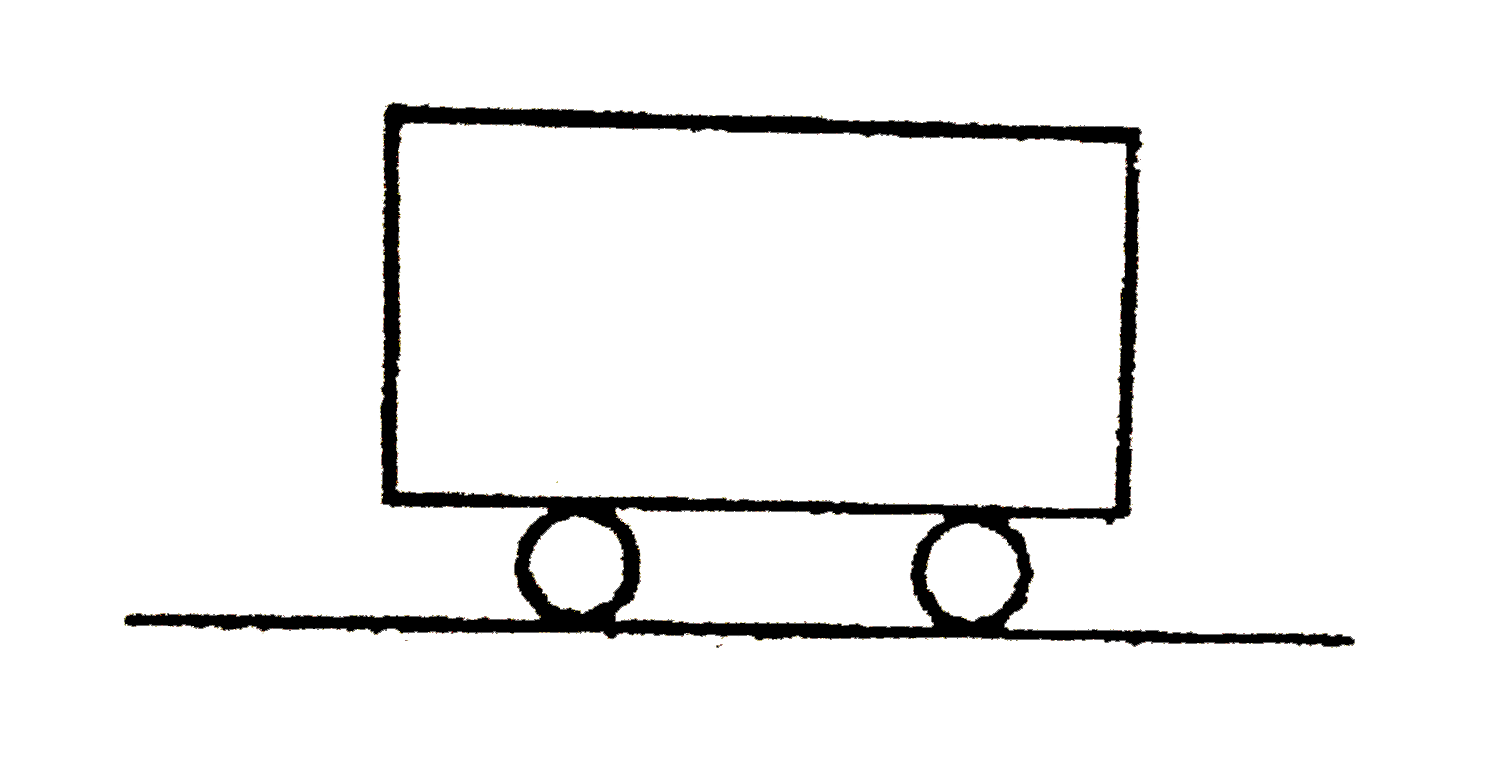A car has total mass 50 kg. Gases are ejected from this car backwards with relative velocity 20 m/s. The rate of ejection of gases is 2 kg/s. Total mass of gas is 20 kg. Coefficient of friction between the car and road is μ=0.1

Car will start moving after time t=.......... second.
12.2
6.4
10.6
5.8
Step by step video & image solution for A car has total mass 50 kg. Gases are ejected from this car backwards with relative velocity 20 m/s. The rate of ejection of gases is 2 kg/s. Total mass of gas is 20 kg. Coefficient of friction between the car and road is mu=0.1 Car will start moving after time t=.......... second. by Physics experts to help you in doubts & scoring excellent marks in Class 11 exams.
Updated on:21/07/2023Topper's Solved these Questions
- CENTRE OF MASS, IMPULSE AND MOMENTUMBOOK - DC PANDEY ENGLISHCHAPTER - CENTRE OF MASS, IMPULSE AND MOMENTUMEXERCISE - More a than one option is Correct
1 Videos
- CENTRE OF MASSBOOK - DC PANDEY ENGLISHCHAPTER - CENTRE OF MASSEXERCISE - Medical entrances gallery
27 Videos
- CENTRE OF MASS, LINEAR MOMENTUM AND COLLISIONBOOK - DC PANDEY ENGLISHCHAPTER - CENTRE OF MASS, LINEAR MOMENTUM AND COLLISIONEXERCISE - Level 2 Subjective
21 Videos
Similar Questions
Comprehension # 4
When the mass of a system is variable, a thrust force has to be applied on it in addition to all other forces acting on it. This thrust force is given by : →F=→vr(±dmdt). Here →vr is the relative velocity with which the mass dm either enters or leaves the system.

A car has total mass 50kg. Gases are ejected from its backwards with relative velocity 20m/s. The rate of ejection of gas is 2kg/s. Total mass of gas is 20kg. Coefficient of friction between the car and road is μ=0.1.
Car will start moving after time t=.........s.
View SolutionComprehension # 4
When the mass of a system is variable, a thrust force has to be applied on it in addition to all other forces acting on it. This thrust force is given by : →F=→vr(±dmdt). Here →vr is the relative velocity with which the mass dm either enters or leaves the system.

A car has total mass 50kg. Gases are ejected from its backwards with relative velocity 20m/s. The rate of ejection of gas is 2kg/s. Total mass of gas is 20kg. Coefficient of friction between the car and road is μ=0.1.
Maximum speed of car will be v=.......m/s :- (Take ln(43)=0.28 )
View Solution
Knowledge Check
A motor car needs an engine of 7500 watt to keep it moving with a constant velocity of 20 m/s on horizontal road. The force of friction between the car tyres and the ground is
A375 dyneB375 newtonC1.5×105 newtonD1.5×105 dyne
A car has to take a safe circular turn on horizontal flat rough road of radius 200 m. If the coefficient of friction between the tyres and road is 0.1 ,then maximum speed of car would be(All are in SI units)
View SolutionA car has to move on a level turn of radius 45 m. If the coefficient of static friction between the tyre and the road is μs=2.0, find the maximum speed the car can take without skidding.
View SolutionA car is moving on a horizontal circular road of radius 0.1 km with constant speed. If coefficient of friction between tyres of car and road is 0.4, then speed of car may be (g=10m/s2)
View SolutionA circular road of radius 1000m has hanging angle 45∘ The maximum safe speed (in ms−1 of a car having a mass 2000kg will be (if the coefficient of friction between tying and road is 0.3)
View SolutionA car is moving on a horizontal circular track of radius 0.2 km with a constant speed. If coefficient of friction between tyres of car and road is 0.45, then maximum speed of car may be [Take g=10m/s2]
View SolutionWhen a car of 3mass 1000 kg is moving with a velocity of 20ms−1 on a rough horizontal road, its engine is switched off. How far does the car move before it comes to rest if the coefficient of kinetic friction between the road and tyres of the car is 0.75 ?
View SolutionA car starts moving from rest on a horizontal circular road of radius of curvature R at . The speed of the car is increasing at a constant rate a. The coefficient of friction between the road and the tyres of the car is The car starts slipping at timet=t0 . Then t0 is equal to:
View Solution
